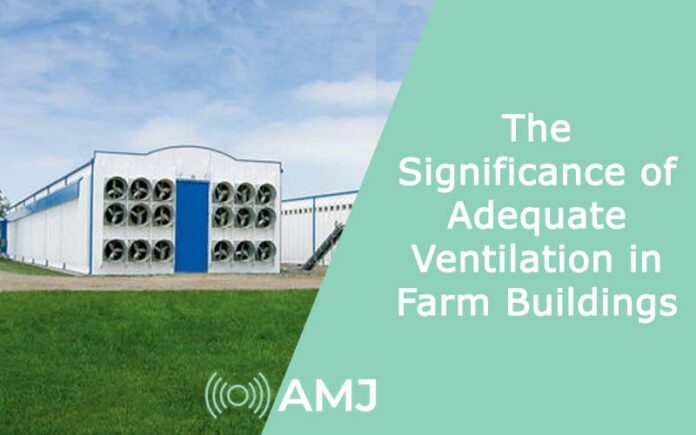A properly ventilated agricultural structure significantly contributes to the overall well-being and productivity of livestock and the success of farming activities. Proper ventilation is an essential component of farm infrastructure that often goes overlooked but should always be considered. This article will delve into the importance of ensuring adequate ventilation in farm buildings, shedding light on its benefits and implications for the agricultural sector.
Contents
Livestock Health and Comfort:
One of the foremost reasons to prioritize ventilation in farm buildings is to ensure the health and comfort of livestock. When exposed to poor air quality, livestock, poultry, and swine are highly susceptible to stress and diseases. Adequate ventilation assists in regulating ideal temperature and humidity levels, mitigating the potential for heat stress during warmer seasons and averting cold stress during colder months. This, in turn, leads to healthier and more productive animals.
Ammonia and Odor Control:
Livestock operations often produce ammonia and odorous gases due to manure decomposition. Inadequate ventilation can allow these gases to accumulate, leading to unpleasant odours and, more importantly, compromising the respiratory health of animals and farm workers. A well-designed ventilation system efficiently removes these harmful substances from the environment, contributing to a safer and more pleasant work environment.
Moisture Control:
Moisture buildup within buildings on the farm can have detrimental effects on the facility’s structural integrity and the livestock’s well-being. Elevated humidity levels can result in the proliferation of mould and bacteria, posing a threat to animal health. Adequate ventilation helps regulate moisture levels by expelling excess moisture, safeguarding both the building and its occupants.
Temperature Regulation:
Ensuring an ideal temperature is paramount for the welfare of farm animals, as extreme heat or cold can negatively impact their health and productivity. Ventilation systems with temperature controls help regulate the indoor climate, ensuring that animals are kept within their comfort zones. This results in better growth rates, higher milk production, and improved egg-laying in livestock operations.
Improved Worker Productivity:
Farm workers are the backbone of agricultural operations. Insufficient ventilation resulting in subpar air quality can cause discomfort, fatigue, and decreased worker efficiency. Properly ventilated buildings create a healthier work environment, increasing worker satisfaction and productivity. Employees are less likely to experience respiratory problems or heat-related illnesses, which leads to fewer sick days and higher job satisfaction.
Energy Efficiency:
While ventilation is essential for maintaining optimal conditions, it can also contribute to energy efficiency. Modern ventilation systems are designed to be energy-efficient, utilizing technology such as variable-speed fans and automated controls to optimize airflow while minimizing energy consumption. This not only reduces operational costs but also promotes sustainability in agriculture.
Enhanced Crop Production:
In addition to livestock, proper ventilation can benefit crop production in certain buildings. Greenhouses and other enclosed structures used for horticulture can benefit from controlled ventilation. It regulates temperature, humidity, and carbon dioxide levels, creating optimal plant growth conditions. Consequently, this results in increased crop yields and enhanced quality.
Conclusion
Proper ventilation in farm buildings is not a luxury but a necessity for the agricultural sector. It has a far-reaching impact on livestock health, worker productivity, and farm profitability. Investing in well-designed ventilation systems ensures compliance with regulations and contributes to a more sustainable and prosperous agricultural industry. As adequate ventilation becomes increasingly recognized, farmers and agricultural professionals must prioritize this critical aspect of farm infrastructure to benefit all stakeholders involved in the agricultural process.












![Index of Money Heist [Season 1, 2, 3 & 4 – All Episodes, Cast and Plot] Index of Money Heist](https://www.asiamediajournal.com/wp-content/uploads/2021/05/Index-of-Money-Heist-3-100x70.jpg)